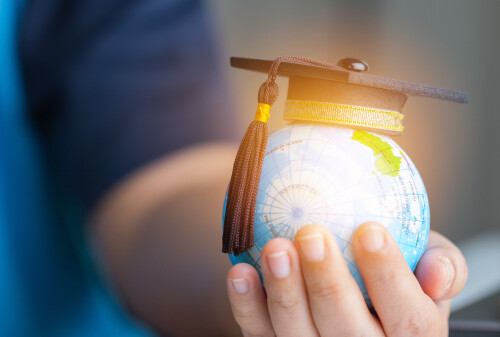
Due to technological progress, artificial intelligence is influencing education. How can it help both teachers and students?
Even today, many countries not only educate kids about artificial intelligence (AI), but also apply it to improve the quality of education. Providing data training is becoming more essential. Young people need to be computer literate to develop better communication skills. The topic is hotly debated, and if you need to write an essay on it, the best custom writing service is at your disposal.
For the time being, students focusing only on good grades is no longer enough to succeed in the workplace. Creative thinking and a desire to constantly learn new things are the key.
To accomplish these goals, students need to recognize that AI is not only used in their graphing calculator. IT is also essential to getting a new high-quality education. Colleges and universities have become fertile ground for educating technologically advanced and skilled professionals.
AI Development
AI is not just a voice assistant in smartphones, but a logical follow-up of technological progress. It uses a full digital “nervous system,” which is essential in all fields, including education.
Schools and universities should help students prepare for the future of AI. Modern educational systems are going to be created based on a combination of a person’s unique creative skills and AI technologies.
At Stanford University, AI has been studied since 1962, and local students have access to one of the world’s best-equipped research laboratories. At the Massachusetts Institute of Technology, AI became a subject for studies even earlier, in 1959. Similar studies are also being done at the Australian National University, Carleton University (Canada), and Nanjing University of Science and Technology (China).
Intellectual Coaching
In an era of major expansions in the field of information, when access to data is provided with the help of a computer, the role of teachers changes from a single authority worker to a mentor who gives recommendations.
Virtual reality technologies based on AI are being actively used in the USA, Japan, China, Australia, and some European countries. For example, the US Institute for Creative Technologies works on prototypes of a virtual educational program that combines AI with a three-dimensional animation, which takes into account students’ age and their abilities. In this case, students learn both with the help of teachers and the use of computer assistants that direct their attention in the right way. Youngsters quickly acquire the skills of interaction with innovative technologies and exchange their experience with peers. Such an ecosystem creates a specific informational surrounding, and teachers, in turn, can analyze both failures and successes of each student more effectively.
Virtual Assistants
Teachers spend too much time on creating educational content that needs to be built into a dogmatic curriculum. Hence, there is no time left for direct communication with students, although children, especially of the primary school, require an individual approach to uncover their talents and potential.
Since AI is used in training software, teachers have more opportunities to perform their jobs and analyze student performance. Programs such as Khan Academy and Thinkster Math assist students in many subjects, depending on their achievements and abilities. In this case, teachers get more time to build a more personalized program, the absence of which often leads to unfavorable consequences.
Educational Social Networks
In many countries, traditional school environments are still necessary. Educational social networks allow both students and teachers to neglect this limitation.
Using the Brainly program and the Q&A global network platform, students can freely communicate with each other virtually. They can share knowledge, experience and points of interest. After entering a question on Brainly, a student can see if it had been already posted on the platform. If you can’t find the answer, you can create a new request and wait until others respond to it. Everything is moderated by special stuff, so you can be sure of accuracy.
Global Teachers’ Network
How have teachers been developing their careers in the new technological age? In the past, they did it with the help of specialized workshops, seminars, or courses. Unfortunately, professors have little time for self-development because they must come up with an individual approach to their students.
The development of both AI and global education ecosystems can change this situation. For example, American Institutes for Research (AIR), provides teachers with online training courses and webinars to share experiences with colleagues.
Another solution is The Global Education Conference, a project that gives access to educational conferences and hundreds of courses for professional growth. Such innovations can deliver astonishing results. For teachers, AI has become synonymous with expanding the boundaries of how you can share experiences and knowledge.
Online Training Courses Using AI
Specialized websites like Teachable, Udemy, and Course Craft enable teachers to build thematic training courses for students of all grades, creating a whole ecosystem that combines coaching, virtual interaction, content design, group video chats, and spreadsheets of students’ performance. An intellectual curriculum can also be developed on a turnkey basis for a particular student. In this case, there is no need to buy costly textbooks and materials.
Thus, the development of artificial intelligence and its implementation in the education system can surpass all our expectations. Just wait and see how AI will revolutionize the way we learn and improve.
Artificial Intelligence is Changing Education Forever
The field of education is changing forever, largely due to advances in AI. There are a lof of ways that colleges and universities are applying it to get better results. This can have a profound impact on the quality of student education.
Leave a Reply